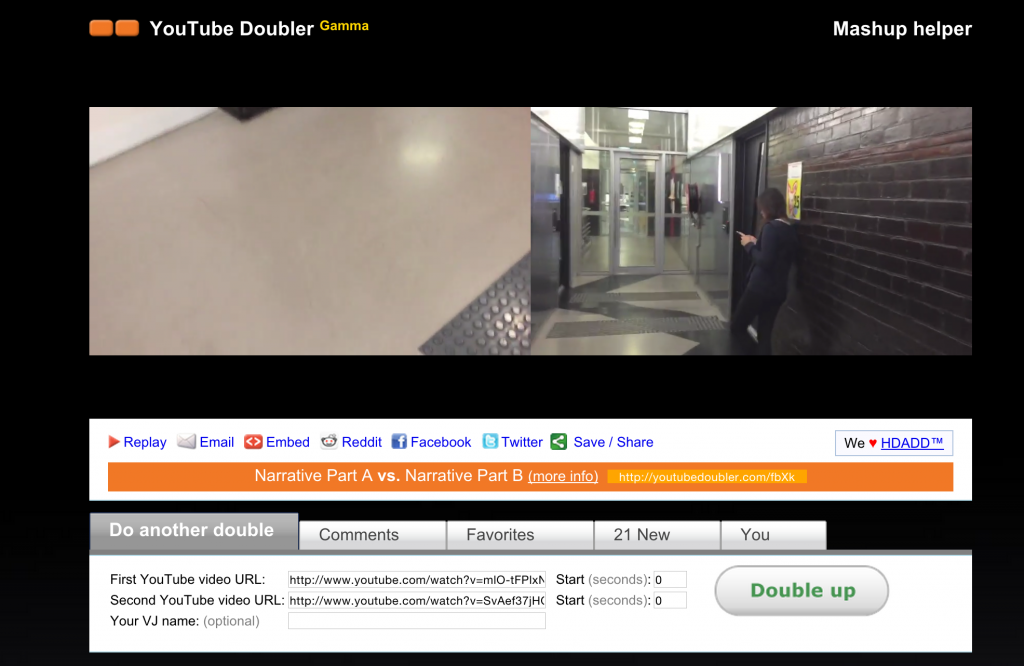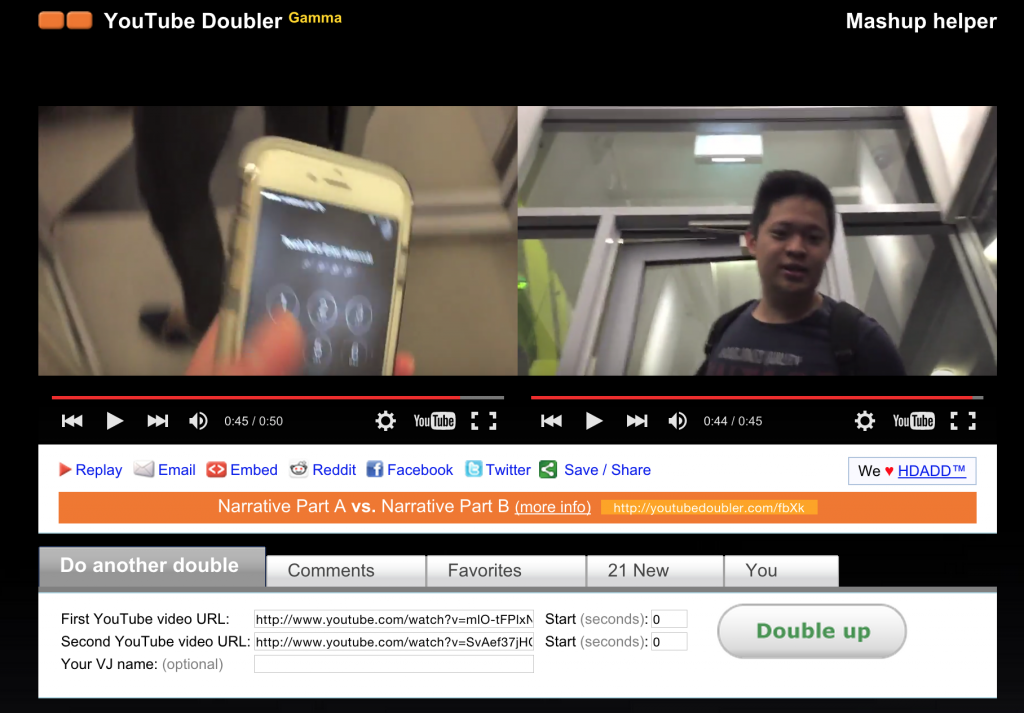This session was a self-directed session again. I gave my two cents on my past sketches and what I felt it was a first person perspective when Seth thought it was a third person perspective. It boiled down to the fact that I should still give more actions that may look more believable as a first person perspective. When someone watches that particular video, they should instantly get that they are being in the shoes of the observer. It was a good insight and I will remember using it in my future sketches which would lead to my final and confirmed prototype.
YouTube Doubler was the main theme in my mind, cutting out all other narrative ideas. This was a bad idea because of limiting myself. Peter and I decided to take a step back and listened to Seth’s advice.
We put a couple questions to prompt us as we answered each of them.Naturally, the first questioned we asked was “What is the first person narrative?” So, what happened was we went through films like Cloverfield, recommended by our peers during our brainstorming session in week 9. We paid close attention of the camera angle, shot, length and edits. How they used first person perspective in cinema. That had led to our next few questions on the techniques of shooting in first person perspective.
We came into class with a little bit more knowledge about how to produce first person perspective and tried to get more feedback from Seth. After the feedback, we had some fragmented ideas (which we won’t know if it will work unless we experiment on it). Seth had mentioned going back to our case study, as usual, and think about how they used the apartment room space, the complexity and dynamics on first person perspective and trying to experiment on things to make viewers experience the entire space without being in the location itself.
So far, my ideas I got:
filming yourself and different reaction. Then, creating three different scenarios to allow viewers to choose which event comes first based on the person’s reaction.
PANEL A: Your face like you’re vlogging (with several expressions/emotions)
PANEL B: 3 different scenarios in one video to allow viewers to choose which event should be played when they see the person’s reaction.






